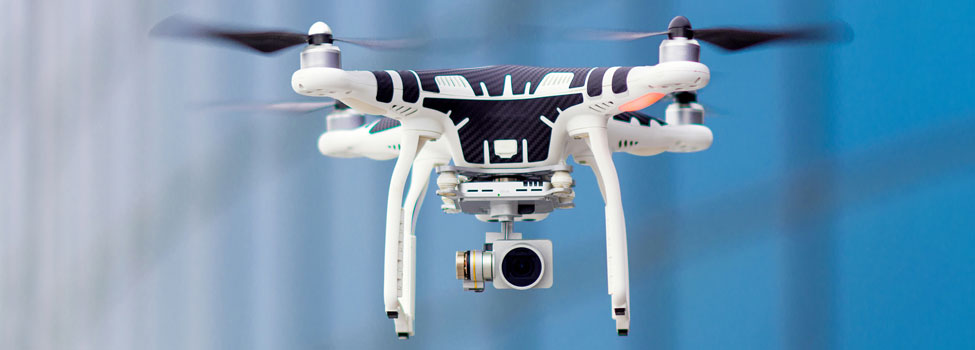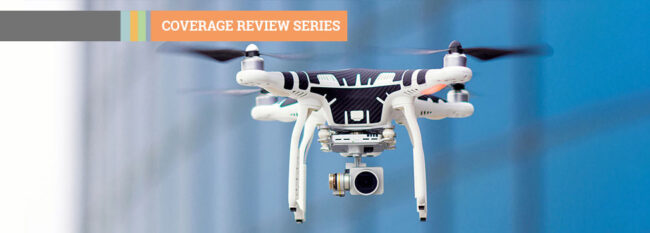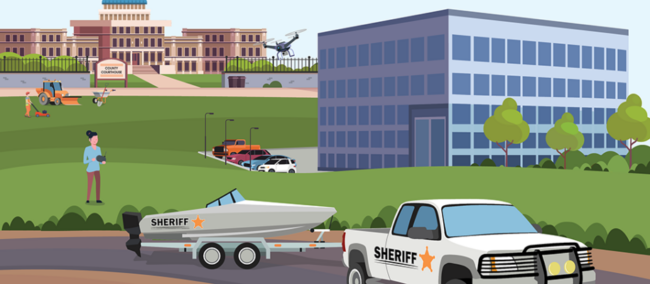Article
Managing Risks of Drones

Drones (unmanned aerial systems) have the ability to aid government entities in many ways: bridge and ditch inspection, mapping, surveillance, and search and rescue, to identify a few. As with any technology, managing the risks of drones is key.
For example, a drone could:
- Strike property and damage it. Worst-case scenario, the drone could collide or interfere with a piloted aircraft.
- Open the government entity to a suit alleging invasion of privacy if it is used for surveillance, mapping or inspection.
- Subject the entity to potential fines and penalties if it is not operated pursuant to state and federal regulations.
Drones may assist in conducting government business such as mapping, surveillance, and search and rescue, but there are risks to their use that members should manage before and during operation.
Key Regulations of Drone Use
Commercial and local government drone use is regulated by the Federal Aviation Administration (FAA), which has issued guidelines for drone usage. Public entities operating a drone must either obtain a certificate of authorization (COA) through the section 44807 exemption process or have the operator obtain authority under the regulations commonly referred to as Part 107.
Applying for the certificate of authorization requires a government entity to discuss and identify the qualifications of drone operators, the purpose of drone use and the place of drone use. The COA only applies to those drones being used for a government function.
A government function is an activity undertaken by a government, such as national defense, intelligence missions, fire fighting, search and rescue, and law enforcement.
A local government unit will want to ensure that any use under the COA is considered a government function. A “blanket COA” generally permits nationwide flights in Class G airspace at or below 400 feet with some restrictions/bans from airports, night flight and operation over people and buildings.
When a government entity wants to use a drone for a purpose other than a government function as defined, the operator needs authority under Part 107.
If the government entity seeks to operate under Part 107, it must follow those rules and regulations. Generally, to operate under Part 107, the individual operating the drone must obtain a remote pilot in command certification. As with the COA, there are limitations and restrictions to drone usage, such as the drone must remain in visual line of sight, daylight-only operations (or civil twilight), maximum altitude of 400 feet above ground level or within 400 feet of the structure if the structure is higher than 400 feet, to name a few.
Develop Policies for Use
Any government entity that seeks to operate drones should create appropriate policies and procedures regarding their use. The entity should also consider identifying operator qualifications to ensure that the operators are fully versed in the appropriate federal and/or state regulations.
Law Enforcement Use
In addition to Minnesota Department of Transportation aircraft rules in Chapter 360, members should be aware of Minnesota Statutes, Section 626.19 that addresses law enforcement use of drones. The law covers authorized uses, limitations on use and required policies and documentation.
Renting, Contracting Considerations
If a government entity leases—rather than owns—the drone and operates it, the entity still needs to obtain the appropriate authority to operate it. (See sidebar for key coverage terms.) Government entities may avoid the need for obtaining a COA or Part 107 licensure by contracting with a private commercial drone operator.
When contracting with a commercial drone operator, the government entity should require and verify that the operator has authority from the FAA under Part 107. Without this, the operator may not legally operate the drone.
Additionally, when entering into a contract, the government entity should pay special attention to insurance requirements, specifically whether the policy covers aviation activity or whether specialty coverage should be required.
The entity should also ensure that the defense, hold harmless and indemnification provisions are broad enough to address the unique risks associated with drone use and that all risks are appropriately transferred to the private operator.
MCIT Coverage and Drone Use
For MCIT coverage to apply, drones must be: 1) owned by the member; 2) scheduled under the MCIT Coverage Document; and 3) operated by a member employee in compliance with FAA regulations.
If an MCIT member uses a drone for official government business, MCIT coverage would respond as follows.
- Property: MCIT provides coverage for physical damage to a member’s drone under miscellaneous personal property. A $1,000 deductible applies.
- General liability: Claims for property damage and bodily injury caused to others are covered regardless of which department is operating the drone. A $2,500 deductible applies.
- Public employees liability: MCIT provides coverage for claims alleging wrongful acts (violation of civil rights) arising from a member’s use of a drone. This coverage is subject to standard exclusions, such as claims alleging an intentional, malicious or criminal act. A $2,500 deductible applies.
Generally, failure to operate the drone pursuant to FAA regulations or for personal use jeopardizes MCIT coverage.
Plan Ahead to Manage Risks
Drone technology may provide efficiencies and benefits to government entities, but failure to manage the risk could have potentially significant risks. Government entities should ensure operators have the requisite skills and training and always comply with applicable rules and regulations.
Topics

